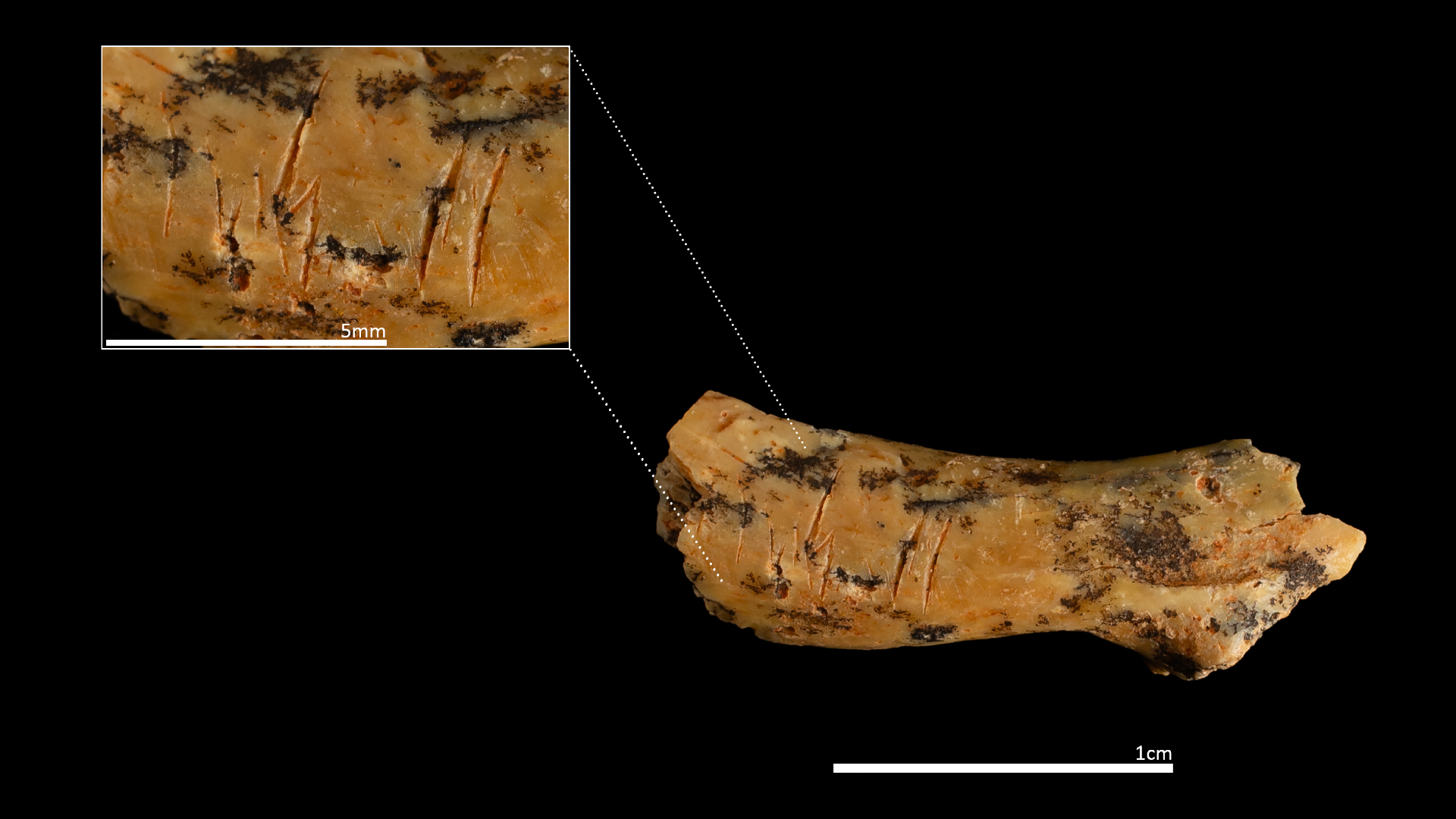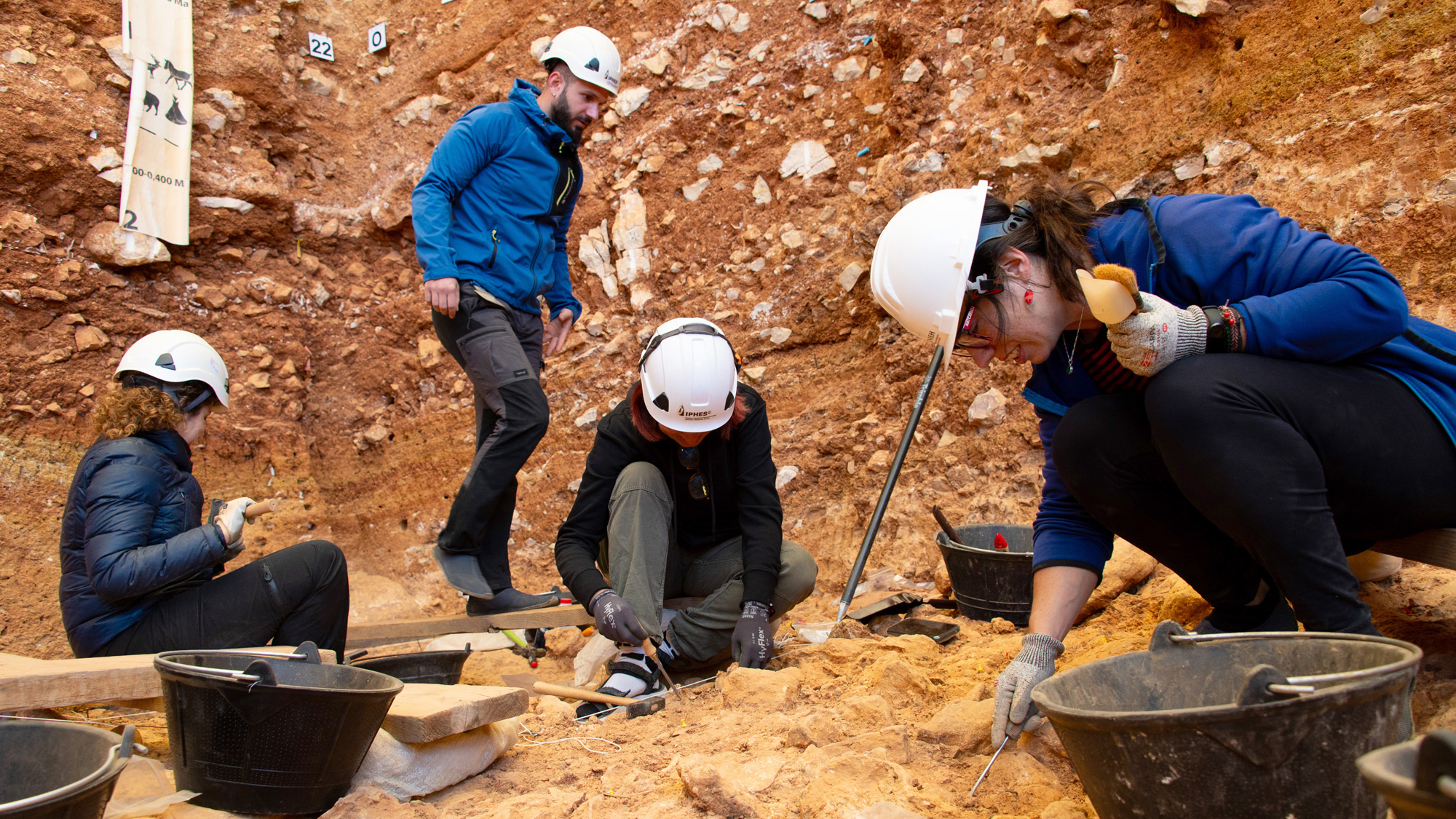Ancient human relative cannibalized toddlers, 850,000-year-old neck bone reveals
Cut marks on a child's cervical vertebra found at Atapuerca in Spain suggests Homo antecessor was indiscriminate about cannibalism victims.

Around 850,000 years ago, a toddler was decapitated and cannibalized, cut marks on one of their neck bones suggest.
The bone, which belonged to an archaic human relative, was found at the Gran Dolina cave at the archaeological site of Atapuerca in northern Spain. An analysis of the bone indicates that the child was between 2 and 5 years old when they died.
"This case is particularly striking, not only because of the child's age, but also due to the precision of the cut marks," Palmira Saladié, co-director of the Gran Dolina excavation, said in a statement Thursday (July 24). "It is direct evidence that the child was processed like any other prey."
The research team excavated a set of 10 skeletons this month, many of which show defleshing cuts and intentional fractures typically found on the bones of animals that were eaten.
All of the newly uncovered skeletons belonged to Homo antecessor, a species of archaic human that went extinct around 770,000 years ago. H. antecessor has only been identified at the Atapuerca site, so its position in the human family tree is unclear. Since it was discovered in 1997, experts have debated whether this ancient human group was the ancestor of Neanderthals and humans or whether it was an offshoot of the human lineage. Either way, H. antecessor is one of the earliest human relatives found in Europe.
Gran Dolina cave has already revealed more than two dozen examples of human cannibalism over three decades of excavation at the site. And roughly 30% of the bones found in the cave so far have cut marks that suggest these early humans were eaten.
"The preservation of the fossil surfaces is extraordinary," Saladié told Live Science in an email. "The cut marks on the bones do not appear in isolation. Human bite marks have been identified on the bones — this is the most reliable evidence that the bodies found at the site were indeed consumed."
Get the world’s most fascinating discoveries delivered straight to your inbox.
The newfound skeletons reinforce the idea that early humans used their companions as a food resource and perhaps as a means of controlling territory, the researchers said.
"What we are documenting now is the continuity of that [cannibalism] behaviour," Saladié said. "The treatment of the dead was not exceptional, but repeated."

The 10 skeletons, including the decapitated and cannibalized toddler, were found in a level that's been dated to between 850,000 and 780,000 years ago. These dates make the bones the earliest evidence of human relatives in Europe — and also the earliest definitive example of human cannibalism to date. (Earlier evidence of cannibalism among human relatives dates to 1.45 million years ago in Kenya, but it's less clear whether those cut marks are from cannibalism or something else.)
Gran Dolina has not yet been fully excavated, however, and it may be hiding more human remains that could shed light on the enigmatic human relative H. antecessor.
"Every year we uncover new evidence that forces us to rethink how they lived, how they died, and how the dead were treated nearly a million years ago," Saladié said.
Editor's note: This article was updated at 11:35 a.m. ET on July 28 to clarify that H. antecessor is an early human relative found in Europe but may not be the earliest.
Human evolution quiz: What do you know about Homo sapiens?

Kristina Killgrove is a staff writer at Live Science with a focus on archaeology and paleoanthropology news. Her articles have also appeared in venues such as Forbes, Smithsonian, and Mental Floss. Kristina holds a Ph.D. in biological anthropology and an M.A. in classical archaeology from the University of North Carolina, as well as a B.A. in Latin from the University of Virginia, and she was formerly a university professor and researcher. She has received awards from the Society for American Archaeology and the American Anthropological Association for her science writing.
You must confirm your public display name before commenting
Please logout and then login again, you will then be prompted to enter your display name.


